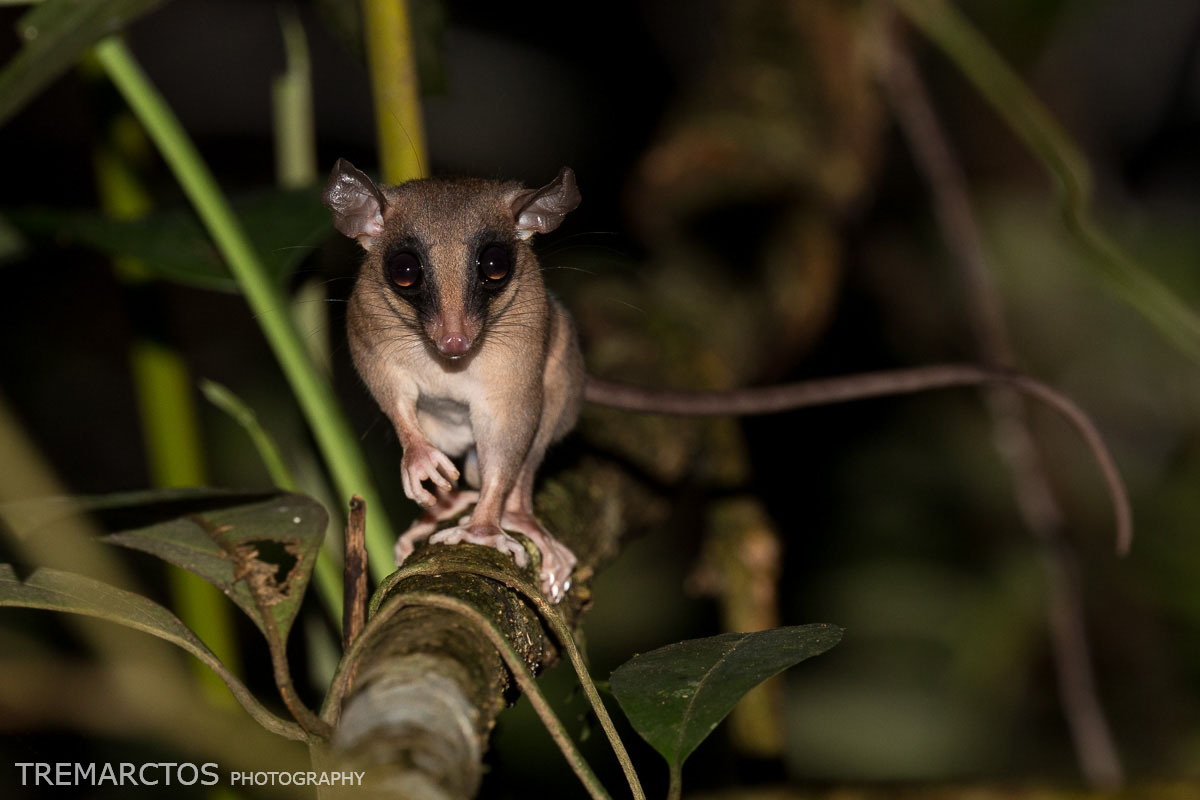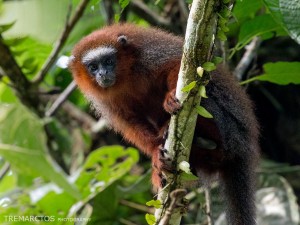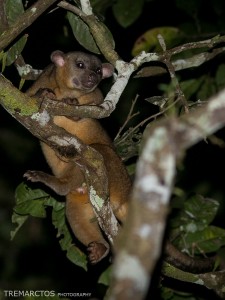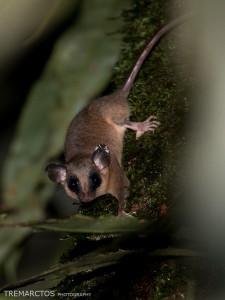
Shiripuno Trip Report
I traveled to the remote Shiripuno Amazon Lodge in Ecuador last December, where I spent ten nights searching for mammals and other wildlife. I’ll be returning in a couple weeks, and I realized that I never posted a report here (I’ve been very busy!). My photos are at http://www.tremarctos.com/category/new/ecuador/

Shiripuno is located on the border of Pastaza and Orellana, near the Tagaeri and Taromenane Intangible Zone. It experiences lower hunting pressure than the Napo lodges (as evidenced by healthy populations of Woolly Monkeys, Cracids, and Trumpeters) and has many miles of trails through a variety of pristine habitats. The owner, Fernando Vaca, is an enthusiastic naturalist.
I was allowed to walk the trails alone, which was a big plus for me (though the local guide Ñame is fantastic). There are several excellent trails behind the lodge, and others across the river can be reached by boat. I will post more details about the specific trails after I return from my second trip.

This was my fifth trip to western Amazonia, and my mammalian targets ranged from the difficult to the impossible. I did not see any of those species, which I ascribe mostly to “bad luck” (the probability of seeing any one of them is quite low)*. Also, my trip coincided with the full moon, and a dry spell that made it difficult to walk quietly toward the end of my stay. I do not think my lack of success was due to the forest itself (otherwise, I wouldn’t be returning!). I hope to have better luck in August, when I have timed my trip to coincide with the new moon. Also, I will spend more time walking during the day, and my new thermal scope should be helpful. Anyway, my herp sightings were the highlight of my trip – I saw far more frogs and snakes here than on previous trips to the region.
*My trip list from a week in Manu Peru – which I consider my most successful South American trip to date – would be similar if I excluded the one day on which I saw both Tapir and Jaguar.
I will post a more detailed report after I return from my second trip, probably in September or October. If you are planning a trip to the region, feel free to bug me about writing it up.

- Common Opossum (Didelphis marsupialis) -1
- Unidentified Marmosa/Marmosops (~3 species) – up to 4/night. I emailed my photos to Rob Voss, who wrote that small opossums are “very difficult to identify from photographs” and that the species of the region “remain poorly known.”
- Nine-banded Armadillo (Dasypus novemicinctus) – 1 seen, others heard moving in the undergrowth. Sign common.
- Black Agouti (Dasyprocta fuliginosa) – Only one seen, as I did not spend much time walking during the day.
- Large-headed (Brown) Capuchin (Sapajus macrocephalus) – seen a couple times across the river from the lodge
- Humboldt’s Squirrel Monkey (Samiri cassiquiarensis) – large groups seen from the boat in transit to/from the lodge
- Spix’s Night Monkey (Aotus vociferans) – 3-4+ groups seen/heard nightly
- White-tailed Titi (Plecturocebus discolor) – 2-3 groups heard each morning, near the river
- Napo Saki (Pithecia napensis) – one group of ~5-6 individuals seen twice in small moriche palm swamp behind the lodge. Very skittish.
- Red Howler (Alouatta seniculus) – heard only from the Mirador trail, a few kilometers upstream from the lodge. Seemingly less common here than at other sites I have visited in Amazonia.
- White-bellied spider monkey (Ateles belzebuth) – one group seen feeding around 3:00 AM. (I think nocturnal activity is unusual for this species?)
- Poeppig’s Woolly Monkey (Lagothrix lagothrica poeppigii) – a very large group (100+?) was present in the area behind the lodge for the duration of my stay. They seemed to “crowd out” other diurnal primates from the area.
- Lowland Paca (Cuniculus paca) – 1-4/night
- Capybara (Hydrochoerus hydrochaeris) – 10, including a mother and young feeding at the border of the lodge clearing.
- Proboscis Bat (Rhynchonycteris naso) – 6
- Unidentified Chiroptera – many
- Kinkajou (Potus flavus) – 10+/night. The most conspicuous nocturnal mammal, especially by ear. (Surprisingly, I didn’t hear any Bassaricyon )
- White-lipped Peccary (Tayassu pecari) – 1 alone, seen twice at night (strange?)
- Amazonian Brown Brocket (Mazama murelia) – 2 sightings
- Red Brocket (Mazama rufina) – 3 sightings


Leave a Reply
You must be logged in to post a comment.